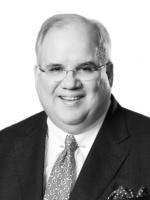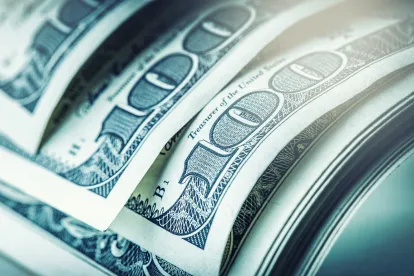Recent congressional action has included significant additional funding for healthcare providers. The Coronavirus Aid, Relief, and Economic Security Act (the CARES Act), the massive stimulus legislation passed on March 27, appropriated $100 billion to the Department of Health & Human Services (HHS) for the Public Health and Social Services Emergency Fund (the Relief Fund) to be distributed to hospitals and healthcare providers on the front lines of the COVID-19 response. This was followed on April 24 by an additional $75 billion appropriated for healthcare providers under the Paycheck Protection Program and the Health Care Enhancement Act. In addition, the CARES Act expanded the existing Medicare accelerated and advance payment programs (AAP Programs) to allow qualified hospitals and other providers to obtain, as a lump sum or in periodic payments, up to six months of advance Medicare payments (based on prior-period experience) as a loan to stabilize cash flow.
So, what has actually happened with this new funding in the ensuing weeks? The following sections summarize what we know so far.
Relief Fund
Summary of Distributions
To date, HHS has made the following allocations and distributions from the Relief Fund, according to the HHS CARES Act Provider Relief Fund webpage:
- $50 billion was allocated for “general distribution” to providers who bill Medicare fee-for-service (MFFS) in amounts proportional to the providers’ share of 2018 net patient revenue.
- An initial $30 billion was distributed between April 10 and April 17 to nearly 320,000 providers based on their pro rata portion of 2019 MFFS payments.
-
-
- HHS has provided a breakdown of these distributions by state and by congressional district.
-
-
-
- HHS has also made publicly available a dataset listing the names of payment recipients and the amounts received for all providers who have received and accepted payment.
-
-
- The remaining $20 billion was available for distribution as follows (although some remains in the process of distribution):
-
-
- $9.1 billion was distributed on April 24 to nearly 15,000 providers based on revenues from Centers for Medicare & Medicaid Services (CMS) cost report data.
-
-
-
- $10.9 billion was available for distribution starting on April 24 to other providers based on revenue information submissions made by healthcare providers to the General Distribution Portal.
-
-
-
-
- As of May 27, $2.5 billion had been distributed to such providers.
-
-
-
-
-
- June 3 was the deadline for providers to submit revenue information and apply for a portion of this additional general distribution funding.
-
-
- $50 billion was allocated for “targeted distribution” to providers in areas particularly impacted by the COVID-19 outbreak, rural providers, providers of services with lower shares of Medicare reimbursement or who predominantly serve the Medicaid population, and providers requesting reimbursement for the treatment of uninsured Americans.
-
- $10 billion was distributed on May 6 to almost 4,000 rural healthcare providers based on operating expenses and type of facility.
-
- $12 billion was distributed on May 7 to 395 hospitals in high-impact areas (i.e., areas that had 100 or more COVID-19 admissions between January 1 and April 10). On June 8, HHS announced that hospitals in high-impact areas could receive a second round of funding if they updated their number of positive COVID-19 admissions between January 1 and June 10. The deadline for the updated submissions was June 15.
-
- $4.9 billion was distributed on May 22 to more than 13,000 skilled nursing facilities.
-
- $500 million was distributed on May 29 to approximately 300 tribal hospitals, clinics, and urban health centers based on operating expenses. This funding complements other funding provided to expand Indian Health Service capacity for telehealth and testing.
-
- On June 9, HHS announced that approximately $15 billion would be distributed to eligible providers who participate in state Medicaid and Children’s Health Insurance Program (CHIP) programs and had not already received a payment from the earlier general distribution to providers. (Approximately 62% of all providers participating in state Medicaid and CHIP programs received payments during the initial general distribution.)
-
- In the same June 9 announcement, HHS said that $10 billion would be distributed to safety net hospitals that serve the most vulnerable citizens, including low-income and minority patients.
-
- A portion of the funds will also be distributed to healthcare providers who treated uninsured COVID-19 patients on or after February 4, upon claim reimbursement through the COVID-19 Uninsured Program Portal. These claims will be reimbursed at Medicare rates, subject to available funding.
Terms and Conditions
As discussed in our previous client alert, despite the initial indication from CMS that distributions would be made to providers with “no strings attached,” HHS released Relief Fund Terms and Conditions subjecting receipt of the funds to certification, documentation, and reporting requirements, and to detailed restrictions on usage of the funds. The terms and conditions of the payments vary depending on the source of the payments — from the initial $30 billion general distribution, the remaining $20 billion general distribution, or the $50 billion targeted distribution. If a provider meets the applicable terms and conditions, the provider does not need to repay the funds at a later date.
Process to Accept/Reject a Payment and Request Additional Payments
HHS distributed automatically the initial $30 billion allocated for general distribution between April 10 and April 17 to nearly 320,000 providers based on their portions of 2019 MFFS payments. HHS is currently in the process of making other payments from the remaining $20 billion general distribution and from the $50 billion targeted distribution. Much confusion has arisen as to how providers are to accept or reject such payments.
- Providers who have received a payment are required to use the CARES Act Provider Relief Fund Payment Attestation Portal within 90 days of receipt of the payment to either (i) sign an attestation confirming receipt of the payment and agree to the terms and conditions of payment or (ii) reject the payment. If a provider does not return the payment within 90 days of its receipt, it will be viewed by HHS as having accepted the terms and conditions. A provider must attest for each payment received.
- Providers who had automatically received funds prior to 5:00 p.m., Friday, April 24 are required to provide HHS with an accounting of their annual revenues by submitting tax forms or financial statements through the General Distribution Portal. The submission of tax forms or financial statements through this portal also serves as an application for additional funding. All providers who submitted their financial information by June 3 will be considered for additional funding from the remaining $20 billion general distribution. HHS has indicated that providers may be eligible to receive up to 2% of their 2018 (or most recent complete tax year) gross receipts from the general distribution payments.
- Providers who were not ready to attest to a payment from the initial $30 billion general distribution but wanted to be considered for a payment from the remaining $20 billion general distribution were required to reject the payment, return it, and submit the requested revenue documents through the General Distribution Portal by June 3.
- Only providers who submitted their revenue information on or before June 3 and have not already received a payment from the remaining $20 billion general distribution are eligible for a potential payment at this time. However, per the HHS website, providers who did not submit their revenue information by the deadline may qualify for “future provider relief funding,” although no information about any future provider relief funding is currently available.
- Providers who affirmatively attested to a general distribution payment but now wish to reject the payment and retract their attestation may call the provider support line at 866.569.3522.
Recent Change in First Reporting Requirement
The terms and conditions include a requirement that providers submit quarterly reports to HHS (and the Pandemic Response Accountability Committee) about how the providers are utilizing the relief payments. Providers were expected to file by July 10 their first report on the use of their payments for the quarter ending June 30. However, on June 13, HHS updated its guidance, reversing course and no longer requiring providers to submit that first report, stating that public data disclosures would fulfill the reporting requirement without further action by healthcare providers. However, HHS has indicated that in the coming weeks, it will release guidelines on the timing and contents of future reports.
HHS has released additional guidance in the form of frequently asked questions (FAQs), which are updated on what seems to be a daily basis. Providers may find these FAQs to be a helpful resource in answering any additional questions regarding Relief Fund payments.
Medicare Accelerated and Advance Payment Programs
In order to increase cash flow to providers, the CARES Act expanded the current AAP Programs and authorized CMS to provide accelerated or advance payments during the period of the COVID-19 public health emergency to any Medicare provider or supplier who submits a request to the appropriate Medicare Administrative Contractor and meets the required qualifications.
CMS issued an Advance Payments Fact Sheet providing detailed information about providers’ and suppliers’ eligibility to receive accelerated or advance payments and a step-by-step guide to the request process.
As of April 26, CMS had paid more than $100 billion to healthcare providers and suppliers through the AAP Programs. Specifically, CMS approved more than 21,000 applications advancing $59.6 billion in payments to Part A providers, which includes hospitals, and CMS approved almost 24,000 applications advancing $40.4 billion in payments to Part B suppliers, including doctors, non-physician practitioners, and durable medical equipment suppliers.
In a press release on April 26, CMS announced that it would no longer be accepting any new applications for the Advance Payment Program and would be reevaluating all pending and new applications for the Accelerated Payment Program, in light of the additional $175 billion made available to providers through the HHS Relief Fund.




 />i
/>i

